Qianling Scenic Area
Qianling Scenic Area, located in Qianxian County, Xianyang, Shaanxi Province, covers an area of 1002.71 square kilometers. Population: 580,000 (2011), postcode: 713300.
Main attractions
Scenic spots include the tombs of Emperor Gaozong and Wu Zetian in Tang Dynasty, the tomb of Princess Yongtai, the tomb of Prince Zhang Huai, the tomb of Prince Yide, the dungeon palace imitating the tomb of Emperor Qianling in Tang Dynasty and the Qianling Museum.
Qianling Mausoleum
The tombs of a couple and emperors of the two dynasties. The Qianling Tomb is the joint burial tomb of Tang Emperor Gaozong Li Zhi and his queen Wu Zetian. In 690 AD, Wu Zetian changed the Tang Dynasty to Zhou Dynasty and established the "Wu Zhou" regime, becoming the only empress in Chinese history. So in terms of the status of buriers, they are not only a couple, but also the emperors of the two dynasties, a "Li Tang" and a "Wu Zhou", becoming the only Mausoleum of emperors in the world.
The design concept of harmony between man and nature. Liangshan, where the Qianling Mausoleum is located, is composed of three peaks. We will be surprised to find that the lofty main peak of Liangshan Mountain just becomes the mausoleum, the ridge on Liangshan Mountain just becomes the Shinto, and the two peaks at the front of the ridge just become the natural gateway to the mausoleum. This is amazing! What is more amazing is that when you look from the east, the figure of Qianling is like a beautiful woman lying quietly between heaven and earth, the highest peak in the north is the head of sleeping beauty, and the lower peak in the south is the chest of sleeping beauty, so people imagine that Wu Zetian is the head pillow Liangshan, pedaling Weishui. At the same time, Liangshan is a naturally formed limestone mountain body, where Wu Zetian, the empress of a generation, was buried. No wonder it is said that only the Tang and Qianling Mausoleums in all the Imperial Mausoleums in China can keep pace with the pyramids in Egypt and the Taj Mausoleum in India. At the same time, it embodies the Chinese civilization's philosophy of Taoism, law and nature, and harmony between man and nature.
The crown of the Imperial Mausoleums of all dynasties. The Qianling Tomb was built in the flourishing Tang Dynasty. Construction began in 684 AD. All construction projects were completed after Wu Zetian, Zhongzong and Ruizhong, which lasted for 57 years. The cemetery ground building imitates the Tang Chang'an city pattern construction, divides into the palace city, the imperial city and the Waiguo city. In the cemetery, there are two original city walls. The inner city covers an area of 2.3 million square meters and the outer city is 80 li. The Qianling Tomb is the only tomb with double walls found in the tombs of Tang Dynasty emperors, which reflects the overall pattern of ancient Chinese capital cities at that time. The cemetery covers an area of more than 100 hectares. It is a magnificent and magnificent building with large and thick stone carvings. It can be called "the crown of the Imperial Mausoleums of all dynasties".
Yishan is the model of the mausoleum. If the Zhaoling Tomb of Taizong in Tang Dynasty set a precedent of "relying on mountains for mausoleums", then the Qianling Tomb is a model of relying on mountains for mausoleums. The construction of Qianling Mausoleum lasted for 57 years. It created a natural effect of placing mausoleums around mountain peaks and laid the foundation for the burial system of the Tang Dynasty's "mountain-based mausoleum". It included two inner and outer walls, a mausoleum, a pair of natural imperial platforms, a straight and broad shrine, symmetrically arranged groups of stone carvings and stone carvings, etc. The whole design was harmoniously integrated with the surrounding natural environment. Integration has become the object that future generations of imperial mausoleums, especially those of Ming and Qing dynasties, imitated when they built mausoleums. As Chen Zhongshi, a famous writer, said, "Only when you stand in front of Liu Che Mausoleum, Emperor Wudi of the Han Dynasty, can you feel the dignity of a generation of emperors; when you stand in Qianling and see Sima Shinto, you can realize the greatness of women."
An open-air stone carving art museum. The original surface stone carvings of Qianling are more than one hundred, distributed outside the four gates of east, west, South and north. 113 of them are located on the two sides of the Shinto outside the South Suffrage Gate. They are arranged symmetrically from south to north, including stone pillars (or Huabiao), winged horses, ostriches, horse-riding and horse-leading people, Zhige generals, wordless tablets, sacred chronicles, sixty-one portraits of ministers and stone lions. They formed the largest stone sculpture group in the imperial cemetery of the feudal society of China, representing the highly developed feudal culture and art of stone sculpture in the Tang Dynasty. Therefore, the Qianling Mausoleum was crowned as the "Open-air Stone Carving Art Museum of the Tang Dynasty".
A huge star cluster in the brilliant night sky. For thousands of years, Wu Zetian, the master of Qianling Mausoleum, was praised and criticized by historians of different dynasties. She left too many puzzles for future generations. Such as: How did she change from a talented person of Taizong to a queen of Gaozong? How can she become a prestigious queen in a world dominated by men for thousands of years? Her Great Zhou Dynasty was in full swing. Why did she stop at that time and fail to pass on to later generations? She overthrew the Li-Tang Dynasty and established the Wuzhou regime. Why did the descendants of Li-Tang always regard her as their emperor and worship her more? Why is the inscription left by her empty? Another example: Wu Zetian built the Qianling Mausoleum for his husband, Tang Gaozong and Li Zhi. Why did Li Zhi's "Sacred Records" stand on the west side of the Mausoleum Shinto, while his "Wordless Stele" is on the east side of the Mausoleum Shinto? Other mausoleums of emperors in the Tang Dynasty have been stolen. Why only the Qianling Mausoleum is well preserved? The sixty-one ministers in the Qianling Mausoleum reproduced the diplomatic grandeur of the Tang Dynasty. Why did they not have heads? This series of riddles revolved around the Qianling Tomb, leaving the world with unlimited speculation and imagination.
Tomb of Princess Yongtai
Princess Yongtai (684-701), named Li Xianhui, was the granddaughter of Li Zhi and Wu Zetian of Gaozong in Tang Dynasty and the seventh daughter of Li Xian of Zhongzong in Tang Dynasty. In 700 AD, he was appointed Lord of Yongtai County and married Wu Yanji, the nephew of Wu Zetian's mother's family. Wu Zetian forced him to commit suicide because his brother, Prince Yide, Li Chongrun, and husband Wu Yanji discussed Wu Zetian's private life in his later years. He died at the age of 17. At that time, he was buried in Luoyang, Henan Province. After the restoration of Zhongzong Li Xian, he pursued the title of "Princess Yongtai" and buried the Qianling Tomb with him.
The Tomb of Princess Yongtai is one of the 17 burials of the Qianling Tomb. The excavation and cleaning from 1960 to 1962 is the largest excavation of female accompanying tombs in Tang Dynasty, which belongs to "Tomb No. 1 is Mausoleum". The underground palace maintains the original structure of "cave and brick". Although the tomb was stolen in its early years, more than 1300 pieces of precious cultural relics have been unearthed. Here you can appreciate the mystery brought by the original Tang Tomb Palace, and also appreciate the exquisite shape of the high-level burial utensils "stone panels", which are classified as national treasures. Especially the Tang Dynasty ladies who are known as "the first beautiful woman in ancient China", so that you can learn from them. In the Tang Dynasty to understand the aesthetic point of view.
Prince Zhang Huai's Tomb
Prince Zhang Huai, Li Xian (655-684), was the second son of Emperor Gaozong Li Zhi and Empress Wu Zetian in Tang Dynasty. He was crowned Prince Huang in 675. He has been imperial to supervise the state many times, and "dealing with things in a clear way is called by the theory of the times". He has made annotations for Fan Ye's Book of the Later Han Dynasty, which is well-known in the history circle of our country. Unsatisfied with Wu Zetian's dictatorship, he was found hiding weapons in Taiwong. So, Fei Li Xian was demoted to Bazhou, Sichuan (now Bazhong County of Sichuan). In 684, he died in Bazhou Mansion and was buried in Bazhou. He was 31 years old. Li Xian, the emperor of the Tang Dynasty, assumed the throne and moved back to Chang'an from Bazhou to bury the Qianling Mausoleum as Emperor Yong. In the second year of Jingyun (711), Tang Ruizhong pursued Prince Zhang Huai and moved his wife, Qinghe Fang, to be buried with him.
The Tomb of Prince Zhang Huai was excavated and cleaned up from July 1971 to February 1972. When it was opened, it was an underground gallery with rich contents and wide subjects, such as Polo Map and Hunting Travel Map, which were called National treasures, and Living Room Map, which reflected the diplomacy of the Tang Dynasty. They showed us the real scene of court life in the Tang Dynasty more than 1300 years ago. There are three colors of Tang Dynasty with bright glaze and tall body, which belong to the first-class cultural relics.
Prince Yide's Tomb
Prince Yi De, Li Chongrun (682-701), the eldest son of Li Xian of Tang Zhongzong, and the eldest grandson of Li Zhi of Tang Gaozong and Wu Zetian. In 701, Wu Zetian ordered Wu Zetian to kill him at the age of 19 because he secretly discussed Wu Zetian's private life with his sister Yongtai County Lord and brother-in-law Wu Yanji. After the restoration of Zhongzong Li Xian, he was bestowed as the Crown Prince, which was called "Yide". In 706 AD, his coffin was moved from Luoyang to Shaanxi, buried with the Qianling Mausoleum at the imperial ceremony, and jointly buried with the deceased daughter of Prime Minister Peizi.
From July 1971 to February 1972, the tomb of Prince Yide was excavated and cleaned up. The whole length of the underground palace is 100.8 meters. It consists of a tomb passage, six crossing holes, seven patios, eight bedrooms, front and rear Yongdao and front and back tombs. The tomb is the largest and highest-ranking Tomb of Tang Mausoleum excavated in Shaanxi so far. It belongs to "Tomb No. 1 is Mausoleum". Many of the ceremonial buildings in the tomb belong to the rank of emperor, such as Huabiao on the surface of the earth, the ceremonial guards of imperial buildings drawn by the underground palace (three out of the imperial palace, the prince and the princess as a separate imperial palace), the lists of imperial palaces (a total of 24) and so on. Here you can feel the mystery brought to us by the imperial mausoleum.
Imitating the Underground Palace of Qianling Mausoleum in Tang Dynasty
As the burial tomb of the third emperor of the Tang Dynasty, Emperor Li Zhi, and Empress Wu Zetian, it lasted more than 1300 years. Archaeologists have explored the tomb of Qianling, the only one of the eighteen emperor Mausoleums in the Tang Dynasty that has not been stolen and excavated. According to historical records, archaeological exploration and reference to the excavated tomb structure of the Tang Dynasty, and to satisfy the curiosity of tourists, we built the "Dugong imitating the Tang and Qianling Mausoleums" in 1994. The underground palace is mainly made of brick and earth, with a total length of more than 200 meters. It is divided into two parts: the first part reflects the culture of the Tang Dynasty; the second part reflects the structure of the tombs of the Tang Dynasty. The whole underground palace mainly tells the story of Wu Zetian's life, reproducing to people the charm of Empress Wu Zetian's domination of ministers and unification of the world.
Qianling Museum
The Qianling Museum was founded in 1978 on the site of the Tomb of Princess Yongtai of the Tang Dynasty. There are abundant cultural relics in the museum. There are more than 100 exquisite cultural relics unearthed from the accompanying tombs of the Qianling Tomb in the Tang Dynasty in the last century. There are three colorful Tang Dynasty, exquisitely carved stone lines and colorful Tang tomb murals. They are called "Three Great Cultural Relics of the Tang Tomb". There are also exquisite workmanship, exquisite carved gold, silver, jade and bronze mirrors, which are different from each other. From the angle of view, it shows us the splendor and brilliance of the culture of the flourishing Tang Dynasty; the special exhibition of the Tang Dynasty's figurines: This exhibition is specially held in conjunction with the 2008 Olympic Games, collecting and displaying more than 100 exquisite pieces of various types of figurines unearthed in Shaanxi since the founding of the People's Republic, which have vivid images, different expressions, some beards and beards. Deep eyes, high nose, some wearing turning collars and forked beard clothes and so on, as if we could see the Hu people's life in Chang'an City 1300 years ago, and listen to the crisp voice of Hu Ji in the West City Restaurant when she fetches guests.
Scenic Area Planning
Planning Guidelines
Fully tap all kinds of tourism resources in Qianxian and Qianling, according to the principles of uniqueness, exclusiveness and authority, to find the personality, soul and concept of tourism. Create a personalized cultural and ecological tourism region, enhance the advantages of differential competition, endow the soul and connotation of tourism projects, and achieve sustainable development of tourism projects.
Planning objective
1. Protect the natural ecological environment, build the characteristic cities in the west, and build the Qianling Tomb as a tourist destination that reflects and complements the imperial mausoleum culture and ecological culture, ancient civilization and modern civilization.
2. Develop tourism service industry, highlight the core area of eco-tourism, lead the flagship products of Shaanxi tourism, and realize the sustainable development of Chengling.
Planning scope
The planning scope is centered on Qianling, 2 kilometers north of Huanling Road, 2 kilometers south of Xiping Railway, west of Fuyin Expressway and east of Moguhe River. The total planning area is about 66 square kilometers.
Planning project
First, the construction of Qianling National Archaeological Site Park
Focusing on the tombs of the emperors of the Qianling, Jingling and Tang Dynasty, 17 groups of accompanying tombs were radiated to show the different patterns of tombs of the prosperous and declining emperors of the Tang Dynasty, as well as the grand momentum of the tombs of the emperors and accompanying tombs of the Tang Dynasty. Through the construction of a unique ecological landscape corridor between the mausoleums, visitors can see, hear and appreciate their mausoleums, and truly be influenced by knowledge and shaken by their souls.
Second, the construction of Datang Town and Tourist Service Zone
Beyond the scope of cultural relics protection, the western side of Guicheng was constructed, and Datang Town and tourist service area were merged. The theme of the small town in the Tang Dynasty is to highlight the "common people" in the flourishing period of the Tang Dynasty and to show the life of the Tang Dynasty. The Qianling Mausoleum Scenic Area is a model of combining modern tourism industry with the imperial mausoleum site park.
Third, the construction of night landscape in Qianling scenic spot
By using modern lighting display technology and full-definition imaging technology, "restore" the shape of Qianling Mausoleum, weave the real mountains and rivers of Qianling Mausoleum into a light show to show.
Fourth, build Qianling Water Paradise
By introducing the water source of the Wool Bay Reservoir Area, the artificial lake with 500 mu water surface will be constructed, forming a shady shore with green trees, rippling green in the lake, seeing the flowers flying red in the distance, the fruits flowing golden, and the main peak of Qianling is picturesque, among which water-playing and sailing will form a unique aquatic paradise of imperial mausoleum.
Fifth, to build the imitation Tangma Stadium
Playing Polo was a popular group entertainment among the royal nobles in the flourishing Tang Dynasty. Through the deep excavation of polo playing, deduce the entertainment rules of polo playing in Datang, arrange the participation procedures, reproduce the grand scene of polo playing in Datang, let tourists integrate into it, compete against each other and enjoy the fun.
Sixth, the construction of the Open-air Stone Carving Museum of the Emperor's Mausoleum
Collecting or duplicating the field cultural relics of the 18 tombs of the Tang Dynasty, arranging them according to the pattern of the Tang Dynasty, forming a centralized exhibition area of the tomb-shaped tombs of the Tang Dynasty, enhancing the shock and impact of the history and culture of the Tang Dynasty.
Seventh, the construction of Fengtian Ancient City Wall Site Park
Strengthen the salvage development and protection of the remaining old city walls in the north of Qianxian City, carry out the project of renovation and restoration, restore the North Gate Building of Qianxian City, and connect the Tang style blocks, the Tang Grand View Garden and the Qianxian imitated Tang Mingyi Street in the North Street of Qianxian County to form a Tang style and Tang charm scenic line.
Eighth, the construction of Peony Flower Field Sightseeing Park
According to the stories and legends of Wu Zetian and Peony, thousands of mu of peony flower fields were planted at the southern foot of the main Mausoleum of the Qianling Mausoleum to create a rich artistic conception of "rich and noble, elegant and elegant, with flowers bowing their heads and worshipping the fragrant dust", and to enhance the ecological ornamental color of the Qianling Mausoleum.
Ninth, the construction of sightseeing agricultural areas
The northwest of Qianling is mainly planting local economic forests, forming mixed fruit forest belt, with both ecological and economic benefits; along 312 National Highway, Fuyin Highway and Qianling East Road, landscape forest belt is constructed with landscape features.
"South to Ruqiu Siye, look forward to Chang'an on the thick soil." This passionate poem is the lifelong hope of the late Mr. Guo Moruo for the development of Qianling tourism. Please go into the Qianling Tomb and learn about it, as well as the Millennium Wordless Stele, and look forward to your interpretation with us! The warm and hospitable Qianling people sincerely welcome guests and friends from home and abroad to visit the Qianling Mausoleum and create a bright future for Qianling Mausoleum hand in hand.
Tourism information
Time and tickets
1. Peak Season Time: March 1-November 30
Opening hours of scenic spots: 8:00 a.m. - 6:00 p.m.
Ticket price: 100 yuan per ticket
Postage admission fee 122 yuan per ticket
2. Off-season time: 1 December to the end of February
Opening hours of scenic spots: 8:30 a.m. - 5:30 p.m.
Ticket price: 80 yuan per ticket
82 yuan per stamp
Traffic information
1. Take Xi'an Bus Tour at Xi'an Railway Station 3 to Qianling directly.
2. Take a one-day tour on the western route of Xi'an to visit the Qianling-Famen Temple, etc.
3. Self-driving:
Driving out of Six Village Forts Toll Station of West Third Ring Road in Xi'an City
(2) along the highway around the city
(3) Drive along the airport highway to Xianyang International Airport in Xi'an, along the G70 (Xi'an-Changwu) highway, under the exit of Qianxian or Qianling.
4. From the Famen Temple scenic spot in Baoji, 40 kilometers east of S209 to Qianxian-Qianling
5. Follow the Central Guan Railway to Liquan County, turn right at Liquan County and go up to Fuyin Expressway to Qianling exit, then go straight to Qianling Tomb.
6. Arrive in Qianxian along National Highway 312. Take Bus No. 3 Tourist to reach any scenic spot in Qianling. The ticket is 3-5 yuan. In addition, take Qianxian to rent directly to Qianling. The fare is 15-20 yuan.
Transportation within the scenic area:
There is a tourist bus in the Qianling scenic area, 20 yuan per person. It is convenient and time-saving to show you every scenic spot in Qianling.
Accommodation information
1. Qianling Hotel, Qianxian County
Address: Dongxin Street
Label: Three-star Hotel
2. Postal Hotel
Address: 312 National Highway New District
Label: Three-star Hotel
3. Tang Hanlong Hotel
Address: 312 National Highway New District
Note: Another five-star "Xiaohuang Hotel" is under renovation.
Reminder
1. If you choose to come to Qianling in summer, please pay attention to sunscreen. It's better to apply sunscreen and take sunshade umbrella.
2. The best way to visit Qianling is to wear flat-soled shoes (tourist shoes are the best), which is convenient for climbing mountains or visiting underground palaces.
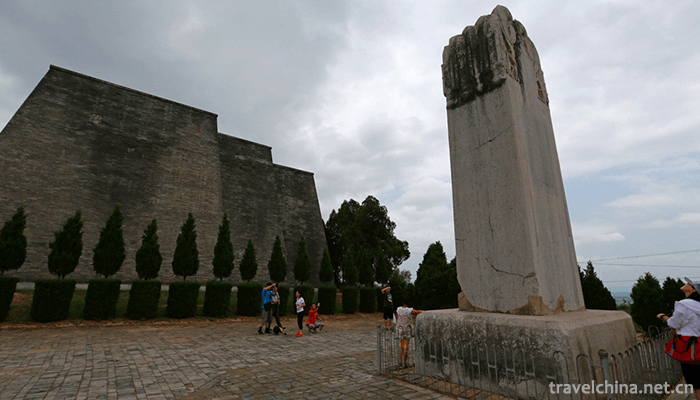
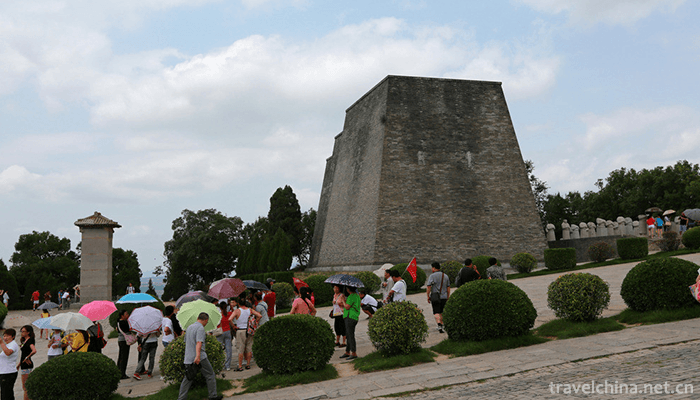
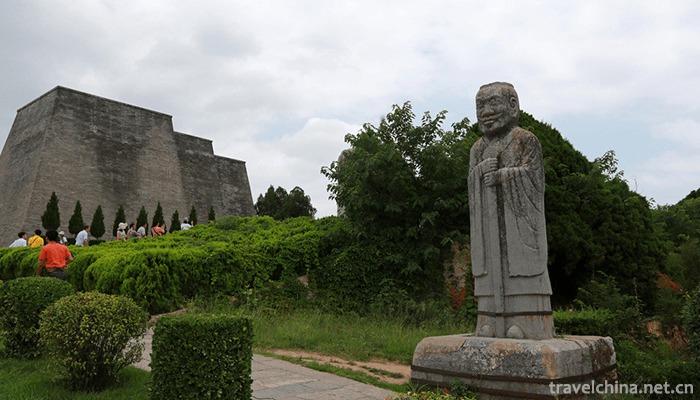
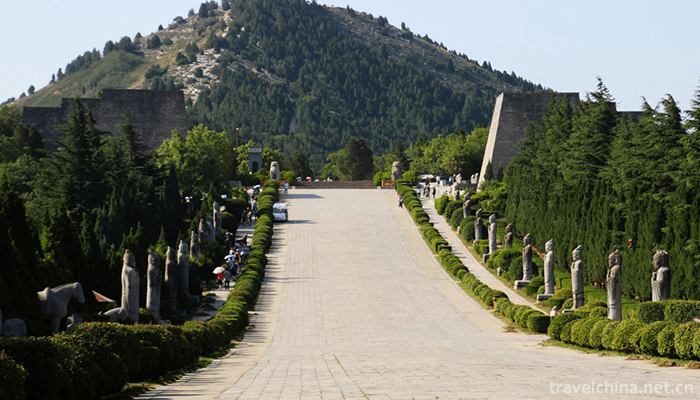
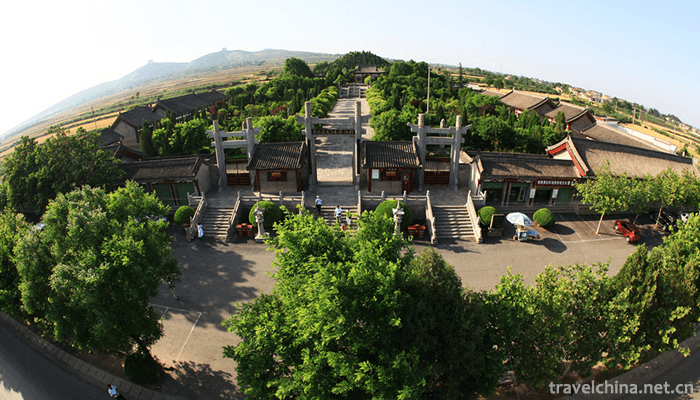
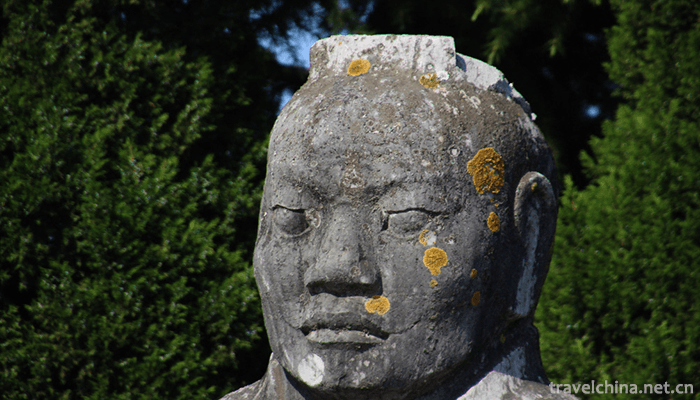
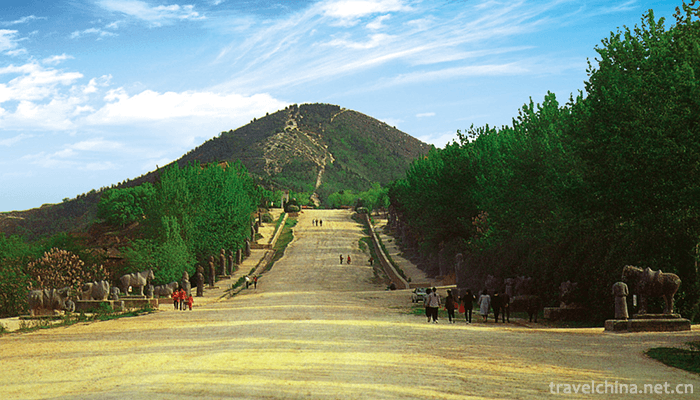


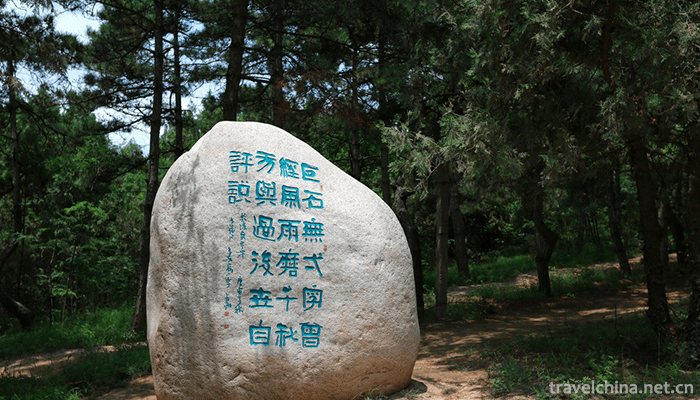
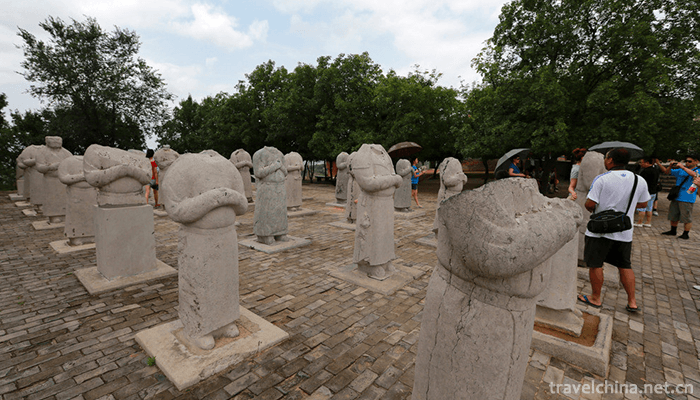
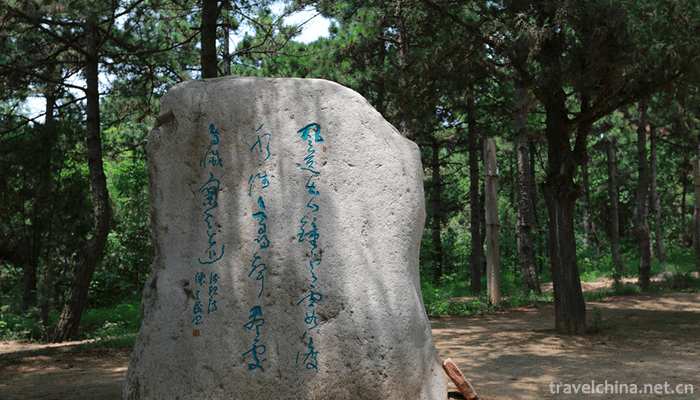
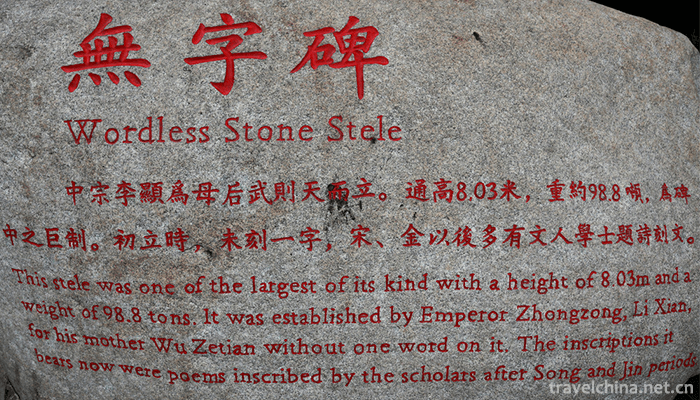
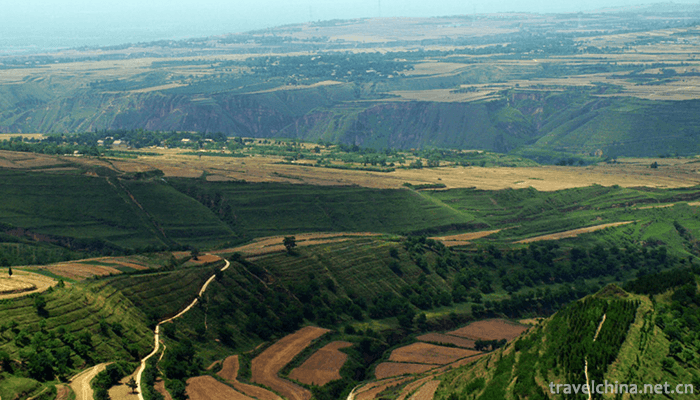
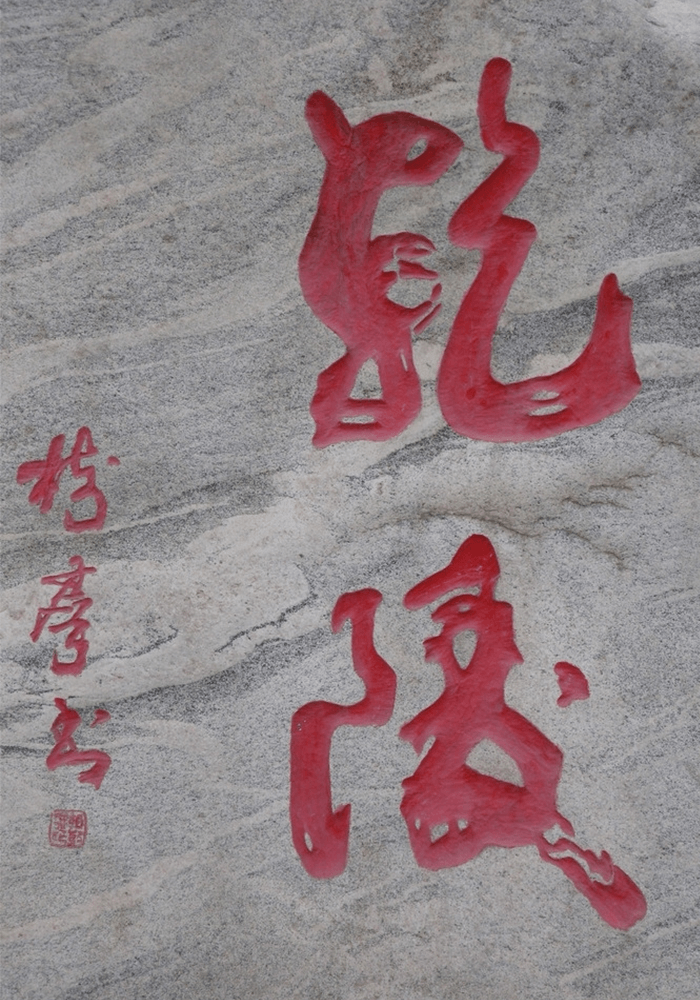

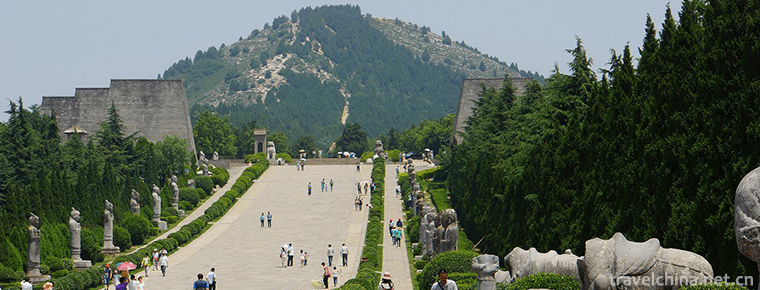
-
1.Changchun World Sculpture Park
Changchun World Sculpture Park is located in the south of Renmin Street in Changchun City. It covers 92 hectares, including 11.8 hectares of water.
Time 2018-12-05 -
2.Mount Mangdang Han culture tourism scenic spot
Located in Yongcheng City, Henan Province, Mangdao Mountain Han Culture Tourist Area is a national AAAAA-level scenic spot which integrates landscape sightseeing, cultural appreciation and ecological
Time 2018-12-09 -
3.Qiangcheng Tourist Area Beichuan
Mianyang Beichuan Qiang Town Tourist Area is located in Beichuan Qiang Autonomous County, northwest of Sichuan Basin. It consists of Beichuan Earthquake Relics Area, Beichuan New County Town
Time 2018-12-12 -
4.Jiaohe ruins
Jiaohe Old Town is the oldest and most well-preserved native building city in the world. It is also the most complete urban relic preserved in China for more than two thousand years
Time 2018-12-22 -
5.Yuan Dynasty Capital City Wall Site Park Yuandadou Chengyuan Site Park
The Yuandu Chengyuan Site Park was built on the Tucheng Site of Yuandu (National Key Cultural Relics Protection Unit, batch No. VI-1). It is located near Mingguang Village, Southern College Road
Time 2018-12-23 -
6.Luo Bu Lin Ka Roblinka
Roblinka is a national key cultural relic protection unit, located in the western suburbs of Lhasa, Tibet. Founded in the 1840s (Dalai VII), the Dalai Lama's summer administration place is a typical T
Time 2019-02-06 -
7.The Story of Barragan
Stories of witty figures of the Mongolian people in China. Long-term spread in Inner Mongolia, Xinjiang and other Mongolian areas. The protagonist Balagan Cang is the representative of the working peo
Time 2019-04-02 -
8.Firing Techniques of Longquan Celadon
Longquan celadon firing technology, the traditional ceramic technology of Longquan City, Lishui, Zhejiang Province, is one of the national intangible cultural heritage.
Time 2019-05-14 -
9.Xingyiquan
Xingyiquan, also known as Xingyiquan, is one of the traditional Chinese boxing. Although there are different opinions on its origin, Ji Jike (1602-1680), a native of Puzhou, Shanxi Province, was widel
Time 2019-07-08 -
10.Shenhai well
Zigong Shenhai well is located at the foot of ruanjiaba mountain in Da'an District, covering an area of 3 mu, with an altitude of 341.4 meters. The well was excavated in the third year of Daoguang in Qing Dynasty (1823 A.D.) and completed in the 15th year of Daoguang (1835 A.D.), which lasted 13 years
Time 2020-10-15 -
11.National characteristics of Chinese embroidery
Nationality is the distinctive feature of Qinghai Folk Embroidery. In the long process of development, Qinghai embroidery has formed its own unique style. Due to the consistency of language, religious belief, festival etiquette, culture and entertainment,
Time 2020-12-12 -
12.Sightseeing car in Chengdu Giant Panda Base
Chengdu Research Base of giant panda breeding currently covers an area of 1000 mu. Tourists can choose to take the sightseeing bus voluntarily if they walk for about 3 hours or take the electric sightseeing bus for about 1-2 hours. At present, there are 8 electric sightseeing buses in Chengdu Giant Panda Breeding Research Base to provide travel services for Chinese and foreign tourists.
Time 2020-12-13